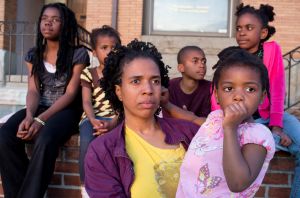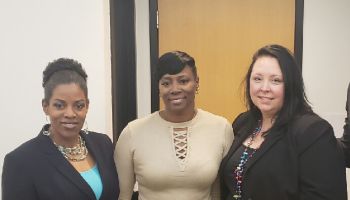Resolved. No child walks into a classroom as just a student. Our children carry with them a whole identity inclusive of their varying home lives, community experiences, and rates of development. Yet in each system they encounter—education, community, health—they have their various parts “siloed” rather than treated holistically.
For far too long we have known that too many children enter school buildings languishing under the burden of poor physical or emotional health, disabilities, and cloaked with residue from conditions of neglected communities, all of which create systemic barriers to their academic and career progress. Yet, we continue to approach the task of increasing their opportunities to learn with simplistic narratives and solutions—more tests—more turnover—more short-term grant cycles—while labeling their schools, their parents and even the students themselves as “failing.”
Resolved. More standardized testing will not produce better academic outcomes. Increased educator turnover will not improve a city or communities’ outcomes. A three-to-five-year philanthropic grant cycle will not allow philanthropy to achieve the ultimate goal of supporting the creation of healthier living and learning communities that provide all students an opportunity to learn.
Our public education system remains the primary vehicle for opportunity for most Americans. When students have healthy bodies and minds and live in safe, supportive neighborhoods, they have fewer absences, focus better and are more likely to graduate. Students who graduate from high school are more likely to be healthy throughout the rest of their lives and contribute to their communities. When those climate factors are addressed, learning occurs and the public school system largely works.
A full 43 percent of all children in the United States live in low-income families, according to the National Center for Children in Poverty. Among school-age children, that figure rises to 51 percent according to the National Center for Education Statistics.

Source: Andrew Lichtenstein / Getty
That means right now poverty is the normative experience of the school years. Moreover, according to the Centers for Disease Control and Prevention (CDC), two-thirds of adults experienced adverse childhood experiences, traumatic events—often rooted in system inequities—that can have negative effects on lifelong health and well-being.
We can’t wait for adulthood to solve these problems: research proves childhood trauma is a significant predictor of school suspensions, attendance issues, and academic failure. Our over-reliance on suspensions and negative disciplinary measures, however, is a sign of our collective failure to address the root causes of traumas our children are facing in a comprehensive fashion.
Resolved. Being trapped in communities suffering chronic poverty, violence and crime, and crushing economic circumstances diminishes children’s life chances to something altogether un-American. Our schools are the sites of the crime, rather than the causes. Yet rather than addressing the causes, our narratives and public policy are merely focused on doing a better job of cleaning up the crime scenes.
As the new federal Every Student Succeeds Act (ESSA) provides more flexibility to states and localities, governors, mayors, school boards, community advocates and philanthropic partners now have a unique opportunity to address the opportunity gaps that have persisted in target communities for decades. With intentional coordination and leadership in our health and education systems, buoyed by increased and more coordinated support of the philanthropic, private sector and advocacy communities, we can make an unprecedented impact on people, place and power. We can reach the highest aspirations for our democracy by working together for the total well-being of all of our young people by creating healthier living and learning communities.
If we indeed love our children and country, rather than only seeing to it that children achieve some arbitrary standardized test score and check off items on their immunization records, it’s our collective job to see to it that they develop academically, socio-emotionally, physically and ethically. We should embrace this chance to join efforts to shepherd our children toward success in college, career and citizenship because we will all benefit.
As we deliberate on the future of health care as a nation and work toward implementation of ESSA, let’s seize this moment to create a new normal. Let’s make every community one that is well resourced with affordable housing and health care, and schools that act as the social hubs and incubators they were intended to be.
We envision a country in which all children are healthy and grow up to be healthy adults. This requires that every child receives coverage for health services, many of which can be delivered through schools. We see a nation in which children enter school ready to learn and are prepared to succeed.

Source: FatCamera / Getty
This requires safe, thriving communities and parents earning a living wage and being able to devote the needed time to ready their children for learning. It also means that districts ensure that all schools have wellness and school climate policies and practices in line with this goal. We envision communities having the resources, opportunities and access families need to thrive in every part of their lives. That requires the people at every level to have a voice, that systems focus on prevention and the needs of the whole child, rather than simply reaction and punishment.
We need civically engaged individuals at the state, county and local levels working to better synchronize our education, health, housing and social sectors to support our youth in achieving whole success in their whole lives. A community approach to health, living and learning is needed as an essential strategy to reach this goal, so the convening power of philanthropy and the private sector must be brought to bear.
Resolved. It’s all connected, and we are the connectors. It drives home the point Audre Lorde once made when she wrote, “There is no such thing as a single-issue struggle because we do not live single-issue lives.”
Let’s move from a nation that applauds the few who manage to beat the odds produced by poverty and poor health and instead create the odds so that every one of our children fully realizes their maximum potential and we achieve our maximum potential as a nation united.
Dr. John H. Jackson is the president and CEO of The Schott Foundation for Public Education. In this role, Dr. Jackson leads the Foundation’s efforts to ensure a high quality public education for all students regardless of race or gender. Dr. Jackson joined the Schott Foundation after seven productive years in leadership positions at the National Association for the Advancement of Colored People (NAACP). He served as the NAACP Chief Policy Officer and prior to that as the NAACP’s National Director of Education.
SEE ALSO:

























